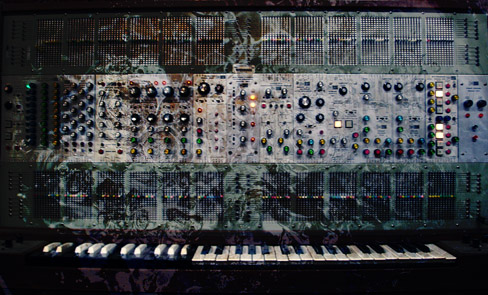
I’m a sucker for all-time-favorite-music lists, especially when they are compiled by musicians and/or enthousiasts with a bag full of talent and/or taste. Through some list that Oren Ambarchi once made I got to know Arthur Russell’s ‘World of Echo’ and Dennis Wilson’s ‘Pacific Ocean Blue’ (both reissued in the meantime), Jim O’Rourke pointed me towards the work of Van Dyke Parks, John Fahey and Luciano Cilio, Arto Lindsay tempted me into listening to Little Jimmy Scott, Joao Gilberto and Caetano Veloso, Klakke (ex-Kraak) made me dig up Peter Jefferies’ ‘The Last Great Challenge in a Dull World’ and Dead C’s ‘Angel’ (long version). And Alan Licht provided me with a wonderful introduction into the wide world of so-called “minimalist” music, with his “Minimalist Top Ten”, published in issue 1 of Halana Magazine in 1996. At that time, most of the records he mentioned were very hard to find (the list was always about the rarity of the works in question as well), but the rise of P2P networks did solve that problem to a certain extent. Also, since the end of the nineties we have witnessed a worldwide (re)emergence of interest in historic avant-garde music, so most of those pieces have been reissued, often enhanced with valuable contextualising information, outtakes and visual material (“doesn’t it feel like it’s all gotten a little out of hand?”, asks Simon Renynolds about the overwhelming reissue-mania). In 1998 Licht revisited his Top Ten with a new list of obscure delights (in Halana Issue 3), and, as I just found out, in 2007, ten years after the first instalment, he made another list (this time for Volcanic Tongue). A few blogs have compiled these lists and added links to online copies (if available). I’ve assembled the information in this post. Please consider the audio copies – flowing on the net – as “teasers”: quality is not optimal, and as I mentioned, some of these pieces have been remastered/restored/re-released the last couple of years, sometimes on limited editions – so get them while you can; these labels and artists need all the support they can get. I’ve added a few records that weren’t in Licht’s lists, but were mentioned in some of his interviews or writings (like Arthur Russell’s wonderful ‘Tower of Meaning’, Tetuzi Akiyama powerful ‘Don’t Forget To Boogie!’ and – for me, a recent revelation – Julius Eastman’s ‘Gay Guerrilla’). All notes are by Licht, except where indicated (some I couldn’t find – anyone has the first issue of Halana?). Some of these works have been real ear-openers for me (and still are), so explore and enjoy.
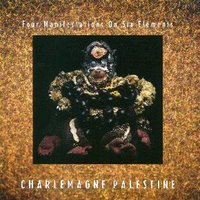
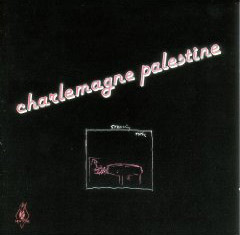
Charlemagne Palestine
Four Manifestations on Six Elements (Castelli-Sonnabend LP 1974. reissued on Barooni)
Strumming Music (Shandar LP 1974, reissued by New Tone)
“Palestine conceived the record, in 1973, as an art installation, each ‘manifestation’ the equivalent of a wall in a gallery room. He had been very influenced by Rothko, and saw aspects of his music – his Golden Quest among them – as being similar to the kind of purity of expression Rothko had achieved. (…) Put crudely, ‘Four Manifestations On Six Elements’ consists of two ‘drone’ pieces – fragments from Palestine’s Golden Quest – and four piano tracks. All are ‘minimal’ – they do not change or resolve in any recognisable melodic way. They could be called repetitive, though for me that would not be wrong so much as irrelevant. I won’t say anything else about the structures of the music because I am a fool in musicological terms and my understanding or not of what Palestine is doing on the record has little to do with the extraordinary effect it has on me. The sounds let you do the work – on the drone tracks you find yourself heading shifting rhythms, tiny melodies even, your ear trying to make sense of what is happening: when the electronic sounds seem to slip out of phase it’s almost shocking. All drone-based pieces have this in common, though no two are quite identical. The piano works, though, are more immediately striking and more immediately recognisable as Palestine. Compared to his more famous minimalist contemporaries, you notice a lack of clarity in the playing, a willingness to let notes melt and tumble into each other. And Charlemagne is not interested in the kind of phase-shifting trickery and perfect clockwork development Reich or Glass bring to their tracks: changes in a piece once it’s started happen at a micro level. But even so the range of emotion the four pieces evoke is remarkable: stateliness, playfulness, fear, sorrow, resolve, mystery. All done within the simplest of structures and with the lightest of touches – all the more remarkable when I remember how elemental Palestine is live”. (Tom Ewing). “Strumming Music (1974) remains his best-known work. It features over forty-five minutes of Palestine playing two notes on a 9-foot Bösendorfer grand piano with great force, the sustain pedal depressed the entire time. As the music swells (and the piano gradually detunes), the harmonics build and the listener can hear a variety of timbres rarely produced by the piano.” (Wikipedia)
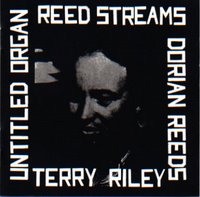
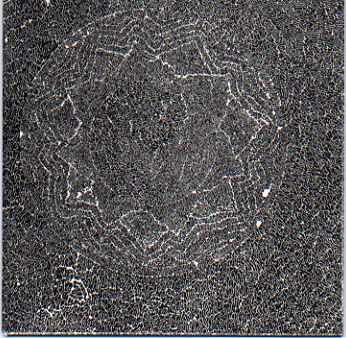
Terry Riley
Reed Streams (Mass Arts LP 1966, reissued by Elision Fields)
Poppy Nogood and the Phantom Band: All Night Flight (SUNY Buffalo, New York, 22 March 1968) (Organ of Corti LP 1968, reissued by Elision Fields)
“‘Reed Streams’ is a reissue of Riley’s first record from 1966, originally containing the ‘Untitled Organ’ and ‘Dorian Reeds’ pieces, remastered here and joined up with a 1970 performance of ‘In C’ by Montreal’s L’Infonie. The two ‘Reed Streams’ tracks were recorded on November 4th and 5th of 1966 in Riley’s New York City studio, and both feature the use of his time lag accumulator. Over the 20 minutes it takes ‘Untitled Organ’ to unfold, Riley creates a whirlpool of subtly-shifting sound via constantly reverberating, well, reed streams. His fingers move across the keys with almost alarming speed, channelling intense flares of organ phrases that after a while start to sound like they’re looping back over eachother. Of course, because the piece is so rigidly executed with an almost mechanical precision, any misstep on the part of Riley’s hands is almost like being jolted out of a hypnosis-induced dream, but luckily (and amazingly considering the accuracy required to make this piece work) it doesn’t happen often, and it isn’t too long before Riley’s echoey undertow swallows you whole and the track is over before you know it. ‘Dorian Reeds’ works a similar pulse but uses soprano saxophone and tape recorders instead, allowing Riley to actually loop sounds instead of just creating the illusion of doing so. The foundation of the piece is a series of fluttery and dizzying saxophone spirals, with Riley using strategically placed notes to punctuate and create a skewed rhythm to work off of. At times the saxophone drones melt together and take on an almost harmonic nature, other times they’re so brash and vibrant it almost stings. Despite using similar techniques, ‘Dorian Reeds’ isn’t nearly as heavenly as ‘Untitled Organ’ (owing largely to the differences in instrument) but still an overwhelming, inspiring listen.’ (Outer Space Gamelan Blog). “The live recording of Poppy Nogood and the Phantom Band All Night Flight, taken from a 1968 concert is the perfect trigger for what anthropologist Jean Rouch called “The Strange Mechanism,” the trance state which most of this decade’s electronic music aspires to induce. The immediacy and the spectral filigree—the ‘dervishes’ summoned during Riley’s nocturnal concert—have been faithfully preserved on this CD. (Richard Henderson)
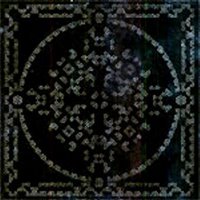
La Monte Young
31 VII 69 10:26 – 10:49 PM / 23 VIII 64 2:50:45-3:11 AM [aka The Black Record] (Edition X LP 1969)
“Young and Zazeela recorded their first full length album 20 years earlier in Munich for Heiner Friedrich’s Edition X label. It was Friedrich who later found the couple’s Dream House in Harrison Street, New York. A limited edition of 2000, 98 of which were signed and dated by the artists, it came to be known as The Black Record, thanks to Zazeela’s black on black cover and label artwork. Side one is a section of Map Of 49’s Dream, performed by Young on sinewave drone and voice, with vocal accompaniment by Zazeela. Side two’s extract from Study For The Bowed Disc features the duo bowing a gong given to them by sculptor Robert Morris. He had made it for his dance piece, War, and asked Young to play it for the performance. Afterwards Morris presented the gong to Young, and he started to experiment on it with double bass bows. If you follow Young’s recommendation to turn it up and play it slow, the resulting low, thrilling drone is at once spiritual and slightly threatening, as though dark forces are being summoned to the surface. Long before Keiji Haino adopted black to shroud himself and his work, Marian Zazeela was embedding her calligraphic lettering and designs in purple and black. The point is to focus on her artwork while concentrating on the vocal/sinewave drones of Young’s dream music.” (Edwin Pouncey)


Steve Reich
Four Organs / Phase Patterns (Shandar LP 1971. reissued by NewTone)
Music for 18 Musicians (1976)
“Although Steve Reich has no patience with those who call him a minimalist, he is one of the founders of the minimalist style of modern classical music. This re-release documents live 1970 performances of two of his pieces for organ. It is of particular historical interest. ‘Four Organs’ is an important composition, and Reich and composer Philip Glass are among the performers. Reich began his musical career as a bebop drummer who loved the music of Charlie Parker and Miles Davis, and his compositions still include jazz-like elements. Much of his output can be viewed as the result of a negative reaction to the academic schools of classical composition dominant in the 1950s and ’60s; he believes the musical establishment took a wrong turn when it began demanding overly analytical compositional techniques and lost interest in the effect new works might have on most listeners. He cites Bach as perhaps the most technically proficient composer ever, but ultimately concerned with music’s effect rather than its method of composition. The two pieces here display techniques Reich uses often — duplication of parts and what he refers to as phasing. Part duplication is one way he achieves a desired audio balance. He is so concerned with that balance and the way his music is performed that he tends not to publish his works. Instead he is generally directly involved in performances as both consultant and player. ‘Four Organs’ started with the simple idea of repeating a single chord while gradually lengthening its duration. The four organists collaborate in producing the chord while a fifth musician keeps a steady eighth-note rhythm on maracas. The organists keep holding the chord a greater number of beats, finishing at 200 about 15 minutes after starting. (..) Reich believes that repetition and slow change will enhance the listening experience because they facilitate deeper understanding. At least he believed that earlier in his career. More recent works have greater complexity and even ‘Phase Patterns’ features more variety than ‘Four Organs.’ Phasing starts with a simple melodic element that is repeated in the style of a classical canon or round, except that the repetitions are played at slightly different tempos. This causes the overlapping lines to change their relationships as the piece proceeds. Although the melodic material remains the same, harmony changes and so does the effect. If you listen closely, the differences can be fascinating.” (Ron Bierman) “My whole interest in minimalism came out of hearing the modal Coltrane stuff like “My Favorite Things” and all those records. I took jazz guitar lessons in high school and I asked my teacher if there was other stuff out there like that. He had that this one record that he’d only listened to once that he gave me: Steve Reich’s Music For 18 Musicians. I listened to it and it totally blew my mind. It was like you could tell he was doing some of the stuff that you could hear in rock music like the Velvet Underground with one ostanto figure repeating with changing over it and the steady pulse. So I immediately connected all these different things. Also, just the whole sonic element to it- in LaMonte (Young)’s music and (Philip) Glass’ music, this kind of psycho-acoustic phenomenon happening. I also starting listening to Glenn Branca at a certain point and that was another kind of meeting point between this kind of minimal stuff and the rock music I had grown up with.” (Alan licht)
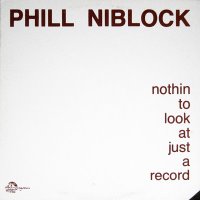
Phill Niblock
Nothin’ To Look At Just A Record (India Navigation LP 1979. reisued by XI on ‘YPGPN (Young Person’s Guide to Phill Niblock)’)
“The pieces are instrumental works, made on tape, performed as tape only, or tape with live musicians. The scores are the composer’s mix scores. In performance the live musician plays with the tape, moving around the space, either matching tones on the tape or playing adjacent tones, creating shifting pools of beats and changed harmonics as he moves through the space and a duration of time. The pieces are made in stages. First, the tones are selected. The musician is tuned during the recording session by calibrated sine waves and watches oscilloscope patterns to tune. Numerous examples of each tone are recorded. These tapes are edited (breathing spaces removed) into blocks of repetitions of each tone and then timed. The timed blocks are assigned to tracks and time slots of the eight tracks. In the score, each horizontal line represents a separate track and a duration of time. Figures above the brackets represent minutes and seconds of elapsed time: within the brackets, above the line is the duration of the event; below the line, the frequency of the tone (the pitch in Hertz). After dubbing up the eight tracks, the top four lines (tracks) of the score are mixed down to one channel, and the bottom four to the second channel of the final stereo mix. The music is architectural – the intent is to fill the space. It is non-frontal music, non-proscenium, anti-stage, not about the ensemble sitting in front of the audience, not about a single sound source. At least four speaker systems are desirable, arrayed around the periphery of the room, saturating the total space, engaging the air. The structure of the music comes from the reproduction of the tape (or CD). The live musician is not a soloist with tape background, but the converse”. (From the original notes)
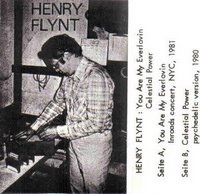
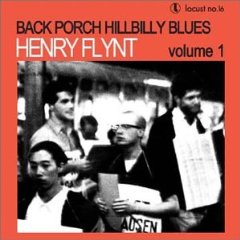
Henry Flynt
You Are My Everlovin / Celestial Power (self-released 1987, reissued by Recorded)
Back Porch Hillbilly Blues, Vol. 1 (compilation released on Locust)
“Recorded in ’80 and ’81, two mind-blowing disks delivering flowing, trance-inducing violin solos of extreme beauty and seriousness. In these incredible electronic hillbilly music violin performances, an exalted synthesis of American ethnic music, raga-like lyrical virtuosity, and a deep sensibility takes place–a nod to human culture from the great nihilist philosopher and father of Concept Art. Should be completely world-famous, but only now is this music beginning to the get the attention it deserves. Before the publication of his music, Flynt was most often known as an (often distorted) footnote in art history, as the man who invented ‘Concept Art,’ Flynt’s name in the early sixties for his formal attacks on logical and mathematics, often presented in art galleries. Flynt was initially (1962) a composer of the post-Cage school who quickly turned completely against modernist music and created his own Flynt genres, primarily through radicalizing Southern musical forms like Bluegrass, Country, and Country Blues-elevating them to an enchanted level, much as Coltrane did with the jazz of his time. His music is a parallel stream to his extremely distinct and radical philosophy (his primary work is as a radical intellectual, with visionary, wide-ranging work that is highly intellectually demanding). More about Flynt and his philosophy can be found at his website“. (Forced Exposure). About ‘Back Porch Hillbilly Blues’: “Like a hidden relic from the far side of the Harry Smith catalog, these early 1960s recordings are a splendid collection of High lonesome hillbilly fiddle and ukulele instrumentals that are surely Henry Flynt’s most articulated statements to date of his honest to god, true to life affinity and love for that dry earth choogaloo upper mountain lower boogaloo foot stomping folk music. Standouts include the acid fried 13th Floor Elevators-ish ‘Sky Turned Red’ and the 15 plus minute lazy zen epic hum and strum album closer, ‘Blue Sky, Highway and Tyme’. No doubt, this is Appalachian bruit driving music bar none”. (Locust) “Instead of the bombastic thud of rock, Flynt’s playing included “rollicking”, “forward-sweeping”, flexible rhythms, indivisible by bar lines, creating an expansive, nearly suspended, rolling sense of time.” (Ian Nagoski)
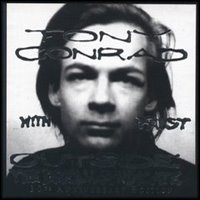

Tony Conrad
Outside the Dream Syndicate (with Faust) (Caroline LP 1974, reissued by Table of the Elements)
Four Violins (1964, reissued by Table Of The Elements)
“The silence ended here. Made over three days on a remote farm in northern Germany, Outside the Dream Syndicate Tony Conrads historic 1972 meeting with rock visionaries Faust was the composer and violinists debut album and a revelatory document of his central role in the birth of minimalism. Issued only in Europe, it was the first officially available record of Conrads microtonal explorations, initiated in the Dream Syndicate in the early 1960s. This 30th anniversary reissue features a second disk of originally unreleased music from the sessions and restores Outside the Dream Syndicate to its rightful place in history: as the vital link between early minimalism and the rock avant-garde and a gripping testament to the power and beauty of the Drone.”(Table of the Elements) “In the very early ’60s, The Dream Syndicate played epic unchanging chamber dirges with intellectual perfection combined with lots of pre-Hippy Fuckoff! . . . Outside the Dream Syndicate was a heavenly marriage. This long unchanging mantra was epic, dignified and strung out. Like the huge grey and white photo of him on the LP jacket, Tony Conrad was a ghost upon his own record. His violin hung like a spectre over the whole album, but never did it even dip or sway. Much more minimal even than John Cale, here was a musician with a quest from the beyond.” (Julian Cope, in Krautrocksampler) “The most striking quality of ‘Four Violins’ is its instant familiarity: the grating sound of the violin parts imparts a vision of a uniquely American distance, the feel of a continent. It’s a quality also present in the spaces surrounding John Fahey’s or Loren Mazzacane’s rattled notes, the early Sun recordings, the compositions of Charles Ives, the righteous soul-breath of Albert Ayler. With ‘Four Violins’ Conrad moves closer to sound-essence, to ringing out the notes which have always existed in the skies of America. The joy comes from connecting with Conrad’s language, from following its own logic — like railroads roaring out into the Midwest. It’s a landmark recording in every sense, and the fact that this is only the first of many forthcoming Conrad installments from Table of the Elements makes me feel like howling with joy.” (David Keenan)
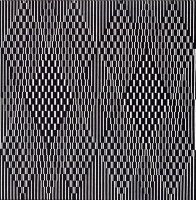
Jon Gibson
Two Solo Pieces (Chatham Square LP 1977, reissued by New Tone)
“This is a reissue on CD of Gibsons second LP, which was originally issued by Philip Glass extremely collectible Chatham Square label in 1977. This CD version presents presents five pieces, three of which are unissued. Cycles, for solo organ, uses a seven note melodic progression in four-part harmony exploring various technique on the pipe organ. Untitled, for solo alto flute, is a long melody where the note sequence is indicated while the other elements of the performance (duration, phrasing, tempo, …) are left to the player choices. Both these compositions combine elements of the written structure with elements of improvisation. Then there are three unissued compositions. Melody IV Part 1 is part of a series of «melody» pieces that use the same melodic material in different contest. Another piece of the «melody» series is Melody III, for Yamaha Organ, built around the number 36 and his possible divisions. To close the CD, Song 1 for quartet that echoes, in the sound and instrumentation, a string quartet with soprano sax, violin and two cellos. The inspiration source is almost traditional and the result is very charming and nice. On cello on this track there is the great American composer and performer Arthur Russell. This release offers another possibility to discover the music of composer Jon Gibson and, more in general, of another side of the American Minimal Music.” (New Tone)
btw: also check out Criss X Cross, a recording of a solo concert Gibson gave in the Sorbonne Cathedral of Paris in 1979. It came out on Tzadik in 2006.

Remko Scha
Machine Guitars (Kremlin LP 1982)
“Remko Scha is an artist from The Netherlands who took Glenn Branca’s guitar to a more extreme level. He built machines with ropes that played guitars. He also used metal brushes. Quite minimal music of static guitar playing, but creating overtones. Next to the first Minny Pops one of the most radical LPs from The Netherlands. Scha is these a professor in Amsterdam, teaching computer linguistics.” (433rpm blog). Check out these excerpts from Luuk Bouwman’s film ‘Huge Harry and the Institute of Artificial Art’, in which Kim Gordon & Thurston Moore and David Lynton talk about the early days of The Machines and their influence on Heavy Metal and Grunge. ‘Machine Guitars‘ is also included in David Suisman’s collection ‘Machines Vs. Music’, compiled for wfmu: “Musicians – who needs ’em? Just to prove it, here’s a collection of music performed exclusively or partially by automated machines, from music boxes and orchestrions to mechanical manipulations by Conlon Nancarrow, Pierre Bastien and others.”

Terry Fox
Berlino / Rallentando (Het Apollohuis LP 1983. ‘Rallentando’ was published on the compilation ‘Ataraxia’)
“Sound is a means of communication, a universal language. It enters the healthy ear without impediments of langage or prejudice It is perceived by every culture in the same way: via the auditory canal. It enters the ear without consent of the listener. It vibrates the eardrum. It requires no intellectuali-zation. No intelligence is necessary. No common language need be spoken. Illiteracy is irrelevant. Sound pauses as pulses in the air. Performance is, for me, an attempt to discover a language or method of communication which bypasses these barriers as sound does. The most important aspect of performance is the elimination of media or mediating or condition. The action is performed live and in front of its receiver. It exists only on these terms and in this context and no other: like eating. My work with the labyrinth led increasingly to the almost limit less sculptural possibilities of sound”. (Terry Fox) “The American ex-pat Terry Fox (resident in Europe for several decades) is probably unfamiliar to even ardent searchers after Minimalist obscurity. He’s far better known in the art world, thanks to his involvement in cathartic performance art alongside Joseph Beuys, and a longterm interest in site-specific installations. Much of his work deals with the specificity of space, drawing extensively on the geometry of the labyrinth in Chartres cathedral. A “sculpture” in Paris saw him open fire hydrants, letting water run through the streets to augment the cobblestone textures. His very occasional recordings document a marked preference for sound art (the organisation of sound in space) over music (sound in time). The excellent but out of print LP “Berlino/Rallentando” includes the very site-specific sounds of an army helicopter patrolling the Berlin Wall (near Fox’s Berlin studio in 1980) and the bowing of a single steel piano wire stretched ten metres across his studio. To Fox, the wire is a sculpture rather than an instrument, and the sound it makes is that of the room (acting as a giant resonator) and not just the wire. He’s far from alone in his enthusiasm for long strings, although other enthusiasts, Paul Panhuysen, Alvin Lucier and Ellen Fullman, are all better known in the music world.” (Brian Duguid) Berlino is a compilation of prerecorded tapes of found sounds and three different piano wire instruments, a kind of aural geography of the Berlin Wall; recorded in San Francisco, Liège, and Berlin between 1978-88. Rallentando was made with three piano wires, attached at one end to a metal radiator and to a wall and stairwell at the other, two cellos and a double bass; recorded live at Het Apollohuis, Eindhoven, Aug. 13, 1988. Also check out ‘Ataraxia‘. Tipped by Alan Licht, but hard to find, is the ‘Linkage’ album (1982).
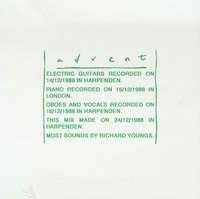
Richard Youngs
Advent (No Fans LP 1990, reissued by Table Of The Elements and Jagjaguwar)
“There was no thought for the practicalities of what to do with 300 albums. It was vanity publishing. I would have laughed at the suggestion that original copies would come to exchange hands at inflated prices, that it would be re-released on CD, be performed at New York’s Knitting Factory, gain celebrity endorsements and be the start of some kind of recording career. (…) It is a record by an intense young man. At the time the tempo seemed perilously slow; now it strikes me as quite racy. The vocals are pretty strident, now I sing less forcefully. I would also play the oboe and guitar differently these days. Traditionally, ‘Advent’ is a season of hope; with the apocalyptic outlook of a 22 year old, I never saw it like that back then. But much came out of ‘Advent’. It feels like the real start of my music making and the end of doing maths.” (Richard Youngs) “A three-part composition for piano, voice, and ultra-nasty oboe and electric guitar, Advent indicated signs of life in a genre long dormant in the 80s ‘experimental’ scene. It continues the tradition from [Terry Riley’s] ‘Reed Streams’ on down with gusto.” (Alan Licht)

Alvin Lucier
Music on a Long Thin Wire (Lovely Music 2LP, 1980)
“A founding member of the Sonic Arts Union, Lucier has had a long career of doing music dealing with acoustic phenomena (his piece I AM SITTING IN A ROOM, which breaks down a tape of his speaking voice into pure room resonances, is a classic). THis double LP is a pretty challenging listen: four twenty minute sides of an 80 foot wire vibrated by an oscillator set on a single pure sine wave. There is no interference by the composer; the system plays itself (like Eno’s ambients or the machine music of Joe Jones or Remko Scha–and unlike the Het Apollohuis gang who play their long wire installations themselves). Often monotonous, the album’s sporadic sonic eruptions (sounding like guitar feedback) reward the listener’s patience.” Read Lucier’s album notes.
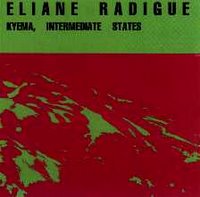
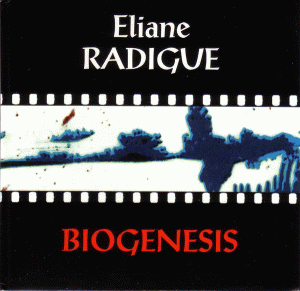
Eliane Radigue
Kyema, Intermediate States (XI LP 1992. Part of the trilogy published as ‘Trilogie de la Mort’ – see also Kailasha and Koume)
Biogenesis (3″ Metamkine 1996)
E = A = B = A + B (2 x 7″ Povertech Industries 2000)
“A one-time assistant to Pierre Henry, Radigue made her mark with quiet, minimal electronic pieces in the early ’70s (which had a pronounced effect on Palestine’s electronic work at the time). She stopped doing music for a while in favor of studying Tibetan Buddhism, then combined the two in a series of records for Lovely Music. I was put off by the use of vocals and texts on those releases, but this CD is an hour of pure tone mixing, much more varied and imaginative than, say, the aural test patterns concocted by that Jliat clown (actually, I like those CDs). P.S. Radigue’s 3″on Metamkine is great too, and there’s a double 7″ from 1969 that I’d really like to hear (two identical singles packaged in a box, designed to be played simultaneously at various speeds, edition of 200).”

Zoltán Jeney
OM (Hungaroton LP 1986)
“A bizarre record by an obscure Hungarian composer I’d been curious to hear after reading a Tom Johnson article on him in VOICE OF NEW MUSIC. I’ve never been able to find the LP that he reviewed, but came across this one a few years back. OM is a single, hour long piece for two organs: one holding barely shifting dissonant clusters around a drone tone, the other somehow sequenced to generate 14 mostly chromatic notes to correspond to the letters in the mantra “om mani padme hum.” The result is a maniacally repetitive music–it makes Philip Glass sound like Carl Stalling. It also sounds a bit like Miles Davis’s mid ’70s organ work. Maddening, nightmarish, tortuous, almost unlistenable–in other words, GREAT!”

Folke Rabe
What?? – version 1 + 2 (Wergo LP 1997, reissued on Dextar’s Cigar)
“A fairly neglected Wergo release recently excavated by Dexter’s Cigar. Rabe’s piece is electronically generated and treated drone/overtone stuff, masterfully executed. Unlike much electronic music of the period, no funny noises, blipping, or bleeping is involved. If Sonic Boom heard this LP he would probably go back to playing Cramps covers. Apparently this is Mr. Rabe’s career high and subsequent LPs are not of interest (haven’t heard ‘em). Incidentally, Bo Anders Persson, the composer on the flip side, was also the leader of the fantastic Swedish psych outfit International Harvester, whose SOV GOTT ROSE MARIE LP is my favorite non-US rare psych album ever (and who later morphed into Trad Gras Och Stenar, who had a great archival live CD out last year.)”

Yoshi Wada
Lament for the Rise and Fall of the Elephantine Crocodile – part 1 + 2 (India Navigation LP 1982, reissued on EM)
“One of the original Fluxus artists, Wada was a key performer in the ’70s Soho new music scene, mostly building his own gigantic adapted pipe organs and bagpipes pumped by air machines. Obviously, on record the physical impact and presence of his music is diminished. Side one of this album is solo overtone singing, which is pleasant enough but not as cool as side two, which combines his voice with 2 of his bagpipe-derived instruments, the Elephantine Crocodile and the Alligator. I’ve always been a big bagpipe fan, and this is the bagpipe drone record I’ve always wanted to hear. Wada’s later LP on SAJ, OFF THE WALL, is a song-for-song cover version of the Michael Jackson album of the same name. Ok, it’s not. It has real bagpipes and percussion but its more frenetic approach is, to me, less effective that the music on this disk.”
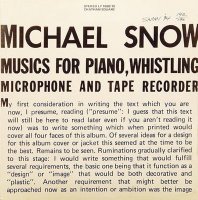
Michael Snow
Musics for Piano, Whistling, Microphone, and Tape Recorder – part 1 + 2 (Chatham Square LP 1975, reissued by Art Metropole)
“Film critic Jonathan Rosenbaum once remarked that Canadian filmmaker, artist, and musician Michael Snow may be the most important living North American artist, and I’m tempted to agree. Snow is best known for 1) his ‘Walking Woman’ paintings which became a mass reproduced image in Canada in the ’60s–the equivalent of Warhol’s Campbell’s cans here and the “star” of his film NEW YORK EYE AND EAR CONTROL, which many of you may know from 2) the ESP soundtrack which features Albert Ayler, Don Cherry, Sunny Murray, John Tchichai, etc. What you probably didn’t know is that Snow instructed them to abandon playing a “head” (melody at the beginning and end) and just dive right into free playing, which makes the album a landmark in the evolution of free improvisation. 3) His landmark WAVELENGTH, a continuous 45 minute zoom from one end of a loft to an extreme close-up of a postcard on the wall at the other end. The film is a favorite of mine and John Oswald notes it as an inspiration for PLEXURE; moreover Stanley Kubrick borrowed the last shot for the ending of THE SHINING. As a musician, Snow played straight-ahead jazz professionally in the ’50s, free improvisation with the Artists Jazz Band and CCMC from the ’60s to the present and released two solo LPs– MUSICS… and THE LAST LP in 1989. The first two sides of this set are a piece called “Falling Starts,” in which a tape of a short piano melody is played first at hyper-speed, then slower and slower until it becomes recognizable and the until each note becomes a thundering, quivering bass boom. Only the Dead C’s RUNWAY cassette surpasses this for low end speaker mayhem. As process music, it resembles Steve Reich’s unrealized piece ‘Slow Motion Sound’ (in which a music phrase would be slowed down on tape without altering the pitch); as it happens, Snow and Reich are friends (Snow participated in two performances of “Penulum Music” in 1969; Reich used a still from WAVELENGTH on the cover of his Shandar LP; and Snow used snippets from that LP in one section of his film RAMEAU’S NEPHEW). As early as 1970, Snow’s films and Philip Glass’s music were being compared (in an article by the playwright Richard Foreman), and this LP was released by Glass, yet despite these associations Snow is seldom recognized as a minimalist musician/composer.The other piano/tape piece here, ‘Left Right,’ features SNow alternating notes and chords in the bass and treble registers in a very repetitive stride piano pattern. The sound is intentionally distorted and a metronome and telephone are heard. As mid-’70s low-fi goes, this belongs next to the Screamin’ Mee Mees or something–it’s pretty brutal. It’s also interesting to note parallels with La Monte Young’s early sixties piano playing, which stretched 12-bar blues structures into indefinite modal passages, and with Charlemagne Palestine’s “Strumming Music,” which also used strict left/right hand alternation to much different effect. Furthermore, many of Snow’s films are conerned with lateral movement (especially BACK AND FORTH and PRESENTS), which makes the title (and the use of a metronome–get it?) a pun on his own art (the totality of his art is kind of an anagram of itself–and not surprisingly, anagrams are a major subject in RAMEAU’S NEPHEW). In fact, he details the many similarities between his music and his films in his extensive liner notes (which cover all four sides of the gatefold sleeve). There was a very limited CD release by Snow in ‘94 which is still available from Art Metropole in Toronto, but Dexter’s Cigar may reissue it in the future, so keep those cards and letters coming.”
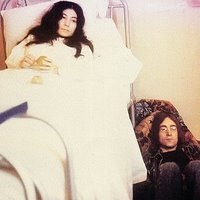
John Lennon & Yoko Ono
Unfinished Music No. 2: Life With the Lions (Zapple Records LP 1969, reissued on Ryko)
“These two need no introduction, but ‘Cambridge 1969,’ which takes up all of side one, is a completely unheralded classic. For twenty minutes Yoko vibratoes her way around a single note while Lennon provides terrifying power-drone feedback accompaniment. This is the ultimate punk/metal take on La Monte and Marian’s BLACK ALBUM (which, considering Ono & Young’s history together, might be both figurative and literal). Towards the end John Stevens and John Tchichai chime in for some free jazz/minimal crossover a la Hermann Nitsch. On side two there’s “Radio Play,” nanosecond snippets of radio played at regular intervals–almost Bernard Gunterish heard in 1997. It’s hard to imagine how betrayed Beatlemaniacs must have felt at the time or since–it’s far more blasphemous than METAL MACHINE MUSIC, but Lou didn’t have a non-caucasian female collaborator for his fans to blame it on. Newly reissued on CD (by Ryko), I maintain that this album is a must for any outside music listener”.


Anthony Moore
Pieces from the Cloudland Ballroom (German Polydor LP 1971, reissued by Blueprint)
Secrets of the Blue Bag (German Polydor LP 1972, reissued by Blueprint)
“Two great missing links in the incredible history of Uwe Nettlebeck’s productions at Wumme, Germany. Slapp Happy founder Moore recorded PIECES a month after Faust cut their debut LP (fall 1971) and SECRETS a month before their second (with SH’s debut SORT OF following in May ‘72 and Tony Conrad/Faust in October). Indeed, Faust’s Werner “Zappa” Diermaier and Gunther Wusthoff both contribute to PIECES, which is not a krautrock or artrock LP but a bona fide minimal classic. Side one is “Jam Jern Jim Jom Jum” which as three singers chanting that mantra while Moore plays these odd, luminous repeating chords underneath. The first piece on side 2, “mu na h-vile ni a shaoileas iad,” sounds uncannily like Richard Young’s ADVENT with its quiet piano and piercing bowed sounds, while “A.B.C.D. Gol’fish” could almost pass for the trance rock classic that Moondog never got around to recording. The follow-up, SECRETS, is three pieces for strings and voice all based on the same 5 note melody. It’s more “classical” than its predecessor, kind of what I expected ACADEMY IN PERIL to sound like. How and why Polydor was convinced to release these is beyond me (anyone know the story?) The Japanese CD reissues are expensive but the original albums are unfindable. PIECES is the superior LP, but both are essential if you have any interest in the genre, period, or principals involved. Incidentally, Moore’s later solo pop LP, FLYING DOESN’T HELP, is a must for fans of WARM JETS Eno/FEAR Cale”.
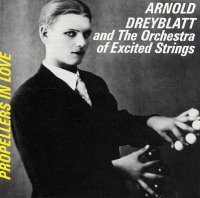
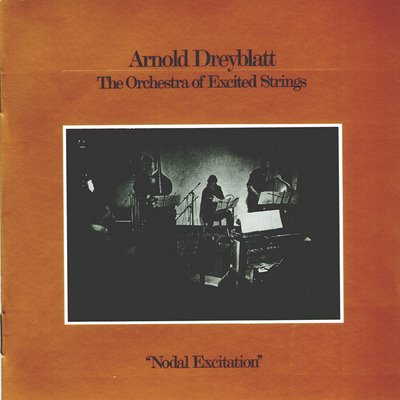

Arnold Dreyblatt (Performed by The Orchestra of Excited Strings)
Propellers in Love (Künstlerhaus Bethanien GmbH LP 1986 / CD Hat Hut, 1986 )
Nodal Excitation (India Navigation LP 1982, reissued by Dexter’s Cigar)
Animal Magnetism (Tzadik CD 1995)
“This guy is an underrated as they get. Unlike many of the people on this list, Arnold’s actually had releases on (relatively) high profile new music labels (India Navigation, Hat Art, Tzadik) and been on the scene since the early ’70s (he worked as an archivist for La Monte Young and at the Kitchen), yet his music is seldom discussed. He uses acoustic stringed instruments like hurdy gurdy, cello, pianoforte, and double bass to create sharp, rhythmic overtone studies. He’s probably the most rock-influenced minimalist; his pieces usually have drums and percussion and he favors propulsive hard rock rhythms that never seem forced or superfluous, as they sometimes do in Rhys Chatham or Glenn Branca’s music. So why doesn’t he have their crossover artrock audiences? Beats me. This is my favorite of his three albums; it’s tough to score on vinyl but is available on CD from Hat Art with a great collaboration with Paul Panhuysen tacked on as a bonus cut. Arnold’s NODAL EXPECTATION LP and ANIMAL MAGNETISM CD are also well worth investigating. If there were as many Arnold Dreyblatt releases as there are, say, Arthur Doyle CDs, the world might be a better place (but probably not).” “While I really like everything of Arnold’s, especially the more “heroic” parts of Nodal Excitations and Propellors in Love, this is the record that really steps out as the first genuinely new sound in maybe 10 years. It’s as if the Dirty Dozen Brass band got a hold of some of Arnold’s records and decided to give it a go. I cannot overstate how unbelievably brilliant this record is. When played loud, I firmly stand by my declaration that it is one of the 4 or so best records ever made”. (Jim O’Rourke)

Jim O’Rourke
Happy Days (Revenant 1997)
“Much maligned as a Tony Conrad/John Fahey ripoff (mostly by people who never listened to either until 1995), HAPPY DAYS is actually a fine addition to the minimal canon. The superficial similarities to FOUR VIOLINS and Fahey’s guitar playing are irrelevant because the piece’s construction bears no resemblance to any Conrad or Fahey music I’ve heard. In fact, O’Rourke juxtaposes their sensibilities with his own much more convincingly here than on last year’s Gastr del Sol Fahey cover with Conrad guesting on violin. It starts off with octaves played for some time on an acoustic guitar, which are overtaken by one to four hurdy gurdys in succession, only to return some forty minutes later. What impresses me is the simultaneously circular and linear structure (not uncommon in process music but fairly uncommon in drone stuff outside of some of Phill Niblock’s work) and the remarkable patience and restraint O’Rourke shows as both composer and performer. The timing of each hurdy gurdy entrance is impeccable, and despite the glacial pacing and harmonic stasis of each part, it never gets boring.”
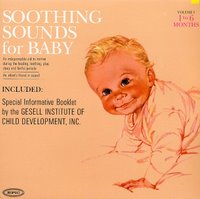
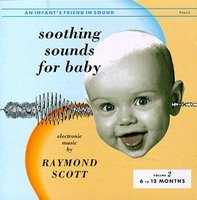

Raymond Scott
Soothing Sounds for Baby – Volume 1 / 2 / 3 (Epic Records 1962, reissued by Basta Records)
“DOOR PRIZE: I’ve paid zero attention to the Scott “revival,” but these ultra-weird items are surely among the most startling rediscoveries of the digital age. Consisting of extremely repetitive miminal electronics (mostly ondioline and oscillators) designed for infants 1 month to 6 mos. (Vol. 1), 6-12 mos. (Vol. 2), and 12-18 mos. (Vol. 3), these bear many uncanny resemblances to the simple melodic improvs and incessant ostinatos of Terry Riley, and the use of echo on Vol. 3 is much like DISCREET MUSIC and NO PUSSYFOOTING. I’m also reminded of the Silver Apples, Kraftwerk, the Calico Wall, Moondog, and even Suicide (Vols. 1 & 2 especially). The 18 minute track, “Toy Typewriter,” with its interminably repeating rhythm figure that shifts as Scott makes adjustments to the tone controls is as definitive a “minimal” piece as I’ve ever heard… Volume 2 is my fave, but they’re all pretty cool.” Read the liner notes here
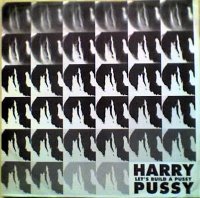
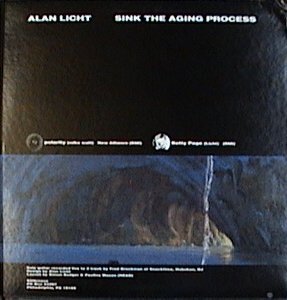
Harry Pussy
Let’s Build a Pussy (Black Bean & Placenta double LP, 1998)
Alan Licht
Sink The Aging Process (Siltbreeze LP, 1994)
“Besides being the best No Wave band of the 90s, Harry Pussy were evidently arch conceptualists as well, based on this release and the brilliant permutations of their VIGILANCE cassette on Chocolate Monk. Here guitarist Bill Orcutt (credited with “mouse’) takes one second of vocals by drummer Adris Hoyos and loops it with his computer, making a drone that goes through various shifts over four sides, trumping my own like-minded, side-long fantasia on the last chord of the Minutemen’s “Polarity” that occupies the first side of my 1994 Siltbreeze LP SINK THE AGING PROCESS. As they say in MOJO, Bill & Adris, phone home!”
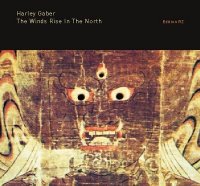
Harley Gaber
The Winds Rise in the North – Part 1 & 2 (Titanic double LP 1976, reissued by Edition RZ)
“This one’s probably more Spectralist than Minimalist (think Giacinto Scelsi, Gerard Grisey, or Horatiu Radulescu), but so be it. Released on a Boston-based record label that specialized in Early Music on period instruments, this is a long (over 100 minutes), sparse string quintet with slowly sustained dissonances that slide around like a pit full of snakes. Gaber gave up music not long after this record to pursue a career as a tennis instructor (!), although several years ago violinist Malcolm Goldstein told me that Gaber had returned to music and art making. Cool Tibetan demon painting cover too.”

Elodie Lauten
The Death of Don Juan (Cat Collectors LP 1985, reissued by New Unseen Worlds Records)
“This is one of the great lost experimental records of the 80s. Lauten has been around since the 70s, going back and forth between Paris and New York. THE DEATH OF DON JUAN is an opera, in the avant garde sense, but I honestly prefer it to any of Robert Ashley’s operas or the Philip Glass ones (except EINSTEIN). There’s a Fairlight on most of the record, but fear not, as you would never know that it dates from 80s. The first two tracks sound like Joe Jones meets Glass or Steve Reich, with harpsichords, trine (an electric lyre that Lauten invented) and Arthur Russell’s cello. “Death As A Shadow” recalls Meredith Monk’s “Turtle Dreams” but is even more haunting and doomy. Russell’s vocal on “Death As A Woman” even reminds me of MOONDOG 2 and sounds unlike any of his other work. Even the libretto is fab-A+”


Wim Mertens
Maximizing the Audience (Les Disques du Crépuscule double LP 1985, reissued by EMI Classics)
The Lost Jockey
The Lost Jockey (Les Disques du Crépuscule double LP 1982)
“Two more sleepers from the 80s, both released on the neat Belgian label Les Disques du Crépuscule. These are both prime examples of Pop Minimalism, which took the tunefulness of Reich & Glass and gave it pop base, rather than a jazz/African (Reich) or western classical (Glass) one. It’s primarily a European phenomenon that also has roots in the first generation British minimalists Gavin Bryars (who recorded a nice LP, HOMMAGES, for Crépuscule) and Michael Nyman. Wim Mertens wrote the first full length study of Minimalism in 1983, AMERICAN MINIMAL MUSIC, and went on to a successful recording career (much like Nyman, who also started out writing a definitive book on experimental music and then became a well-known composer; both have also provided scores for Peter Greenaway films). This double LP is easily the best thing by him I’ve heard, outside of one essential cut, “Multiple 12, on the Crépuscule label sampler THE FRUIT OF ORIGINAL SIN. “Circles”, which occupies the first side, is a wonderful additive piece, with reedist Dirk Descheemaeker slowly building up melodic fragments via overdubbed clarinets and sax. Mertens’ solo piano track is Hallmark-city (keep your Kleenex close by), but the title track is the pinnacle of Pop Minimalism. With a charging piano pulse that’s straight out of Roxy Music’s “Do the Strand”, Mertens expertly weaves chattering percussion, operatic female vocals and aching violin/sax lines in and out. The Lost Jockey was a large aggregate of British new music performers who came together on this LP to play compositions by three of its members: Andrew Poppy, John Barker and Orlando Gough. Poppy is the best known of the three-he worked with Psychic TV on their first two albums and made two rather dated EPs for ZTT in the mid-80s-and his pieces here are better than the later works but still forgettable. It’s Gough’s side-long “Hoovering the Beach I & II” that’s worth the price of admission-with piano patterns which gradually elongate into rippling curlicues and Glassian high-pitched female vocals, this is truly a forgotten highlight of second generation Minimalism.”

Roberto Cacciapaglia
Sei Note in Logica – Six Notes (Philips LP 1979, reissued by Proper)
“Cacciapaglia is an Italian composer with a long career; this early LP is an anomaly in his output and seems to be his take on the then-current Minimal trend, as the music and instrumentation is highly reminiscent of both Fred Rzewski’s “Coming Together” and Steve Reich’s “Octet” (which, to be fair, Cacciapaglia probably hadn’t heard since it came out at the same time as this LP). But the wild card here is the incorporation of computer sounds–pretty novel for the time, and used to awesome effect. A massive influence on Jim O’Rourke (just ask him) and I’ll bet Fennesz is well aware of this disc as well. Ace photo of a tennis court on the cover too (a pretty Minimalist sport, when you think about it).” Roberto Cacciapaglia: “It speaks about the adventures of six notes, quattro bemolle, la, si, re and mi plus the fa and the sol that repeat and combine themselves in all of their possibilities. It is like a microscopic and slow motion vision. It exasperates the analysis of details and eviscerates the mechanisms with which music unravels itself and changes. In this way, awareness is made of even one single note and this consciousness can be lived and maximized.”

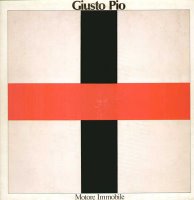
Franco Battiato
Battiato [aka Za] (Ricordi LP 1977, reissued by Artis)
Giusto Pio
Motore Immobile (Cramps LP 1978, reissued by Cramps)
“Two more Italian Minimal masterpieces. Battiato released a bunch of progressive LPs in the 70s, some of which Water has been reissuing on CD in the US (although they can be found as budget CDs in Europe) and found pop stardom in the 80s. The first side of this album, “Za”, is his most explicitly Minimal piece, and it’s a doozy. Pianist Antonio Ballista plays one lustrous chord over and over, but depresses the damper pedal-cutting the attack short, he lets melodies emerge from the sympathetically vibrating strings. After about 8 minutes he changes chords, and repeats the process, then goes back to the original chord. It sounds electronic, but is totally acoustic-just brilliant. Pio was/is (?) an associate of Battiato’s and MOTORE IMMOBILE was his debut LP. On the first side/title track, he uses a droning organ and moves from triad to triad, superimposing the next one briefly before moving on, occasionally expanding the sound with octave doubling and then just as quickly subtracting the lower tones. Intermittent humming and violin provide additional notes. On the second side, “Ananta”, he uses a piano flourish to introduce each triad, landing on the tonic note each time. Very calm, and very mysterious, this record is as overlooked as they come (part of the appeal, of course).”


J.B. Smith
Ever Since I Have Been a Man Full Grown & Two Other Prison Songs Sung Unaccompanied (Takoma LP 1965)
Eddie “One String” Jones
One String Blues (Takoma LP 1960, reissued by Gazell records)
“A solo vocal blues album. Smith only uses one, 5-note melody for the whole thing-2 10 minute tracks on side one, and a sidelong piece on side two-the only changes are in the lyrics, which describe his imprisonment and other fun life experiences. To my mind, this is hardcore Minimalism, and shows the blues as one of the genre’s truest sources, a notion which has only been acknowledged by La Monte Young (forget the Forever Bad Blues Band, find the bootlegs with “Bb Dorian Blues fifth day of the hammer” or better yet, consider the one sound installation he did where each chord of a 12-bar blues was sustained for an entire day over 12 days!), Henry Flynt (check out the BACK PORCH HILLBILLY BLUES CD-Volume 1, not Volume 2–on Locust), Jonathan Kane (his FEBRUARY CD on Table of the Elements is a bit rockist in execution for my tastes but pretty solid conceptually), and Tetuzi Akiyama (see the one-chord “Fast Machine” and the post-Hooker droned out boogies on the classic DON’T FORGET TO BOOGIE LP). Another Takoma LP, ONE STRING BLUES is also of note here, at least for Eddie “One String” Hazelton’s tracks, played on a homemade one-string instrument. Finally, any fan of Minimalism (or of Loren Mazzacane Connors) must hear Junior Kimbrough’s “Baby Please Don’t Leave Me”, a solo demo posthumously released on MEET ME IN THE CITY (Fat Possum) which is a monstrous overtone study.”
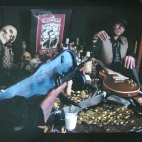
Tetuzi Akiyama
Don’t Forget To Boogie! (Idea LP 2003)
“The name of Tetuzi Akiyama will be familiar to purveyors of the potent Japanese Improv scene, whether its playing in Keiji Haino’s Nijiumu, or at the monthly OFF SITE gathering. But this, his third solo album of guitar, will smoke newcomers and familiars alike. Capturing the squirming spirit of John Lee Hooker, Silver Apples, and the Pink Fairies, Don’t Forget to Boogie! is an individualistic one-stringed ego trip that shifts from high-octane fuzz churning to loner tape-collage damage back into the one-man drone cycloningthat recalls the third-eye throb of Tony Conrad’s Four Violins as much as it does that singular lingam wiggle of the Crawlin’ King Snake himself. Recorded straight, with no overdubs, no backing band, the thirteen tracks presented here are rough chunks of the endless rock edited together by Toshimaru Nakamura into an album of weird interludes and epic chug, embodying the most visceral of musics, from Delta blues to Japanoise. Opener “It’s a Boogie Thing” is as messy and greasy as Billy Gibbons’ beard and knuckle hairs, while “With Black Thompson” has a sliding, off-the-cuff feel. “Dead or…” burns and chars like a focused black leather laser for ten solid minutes. There’s more at work than bombastic licks & blooze drone, the etheral beauty of “She’s a B-Girl” shimmers and sustains like the opening of Tim Buckley’s “Lorca” reworked for an Angelo Badalamenti soundtrack. “Way Over the Bridge” is part Angus Young hammer-on, part John Fahey string structuring, whereas end track “City of Gold” is as lucid and pastoral as a John Hurt theme. While similar in approach to the ambient blues assimilation Keiji Haino achieved on the legendary first Fushitsusha, Tetuzi Akiyama’s Don’t Forget to Boogie is more than mere reminder, it’s a monolith of rock.” (Idea Records)

Earth
Earth 2 – Part 1 & 2 (Sub Pop 1993)
“In a world with Maryanne Amacher and EARTH 2 there is simply no reason for any sober human to listen to Sunn 0))), but if you’re drunk and you like druids and/or dry ice I suppose they’re serviceable…anyway, this is the record that initially inspired them. Unlike a lot of more recent noise underground stuff, which (to me) is relatively factorable, this is technically boggling drone music–the sustain is achieved not just with distortion but through overdubbing, and there’s clean guitars in there too–even on headphones it’s hard to tell what the fuck they’re really doing. On this album, Earth set up a drone and place a few choice metal riffs against it over the course of forty minutes, at which point they just let the drone chord ring for another half hour. I remember standing in a record store looking at this CD’s awful front cover and goofy fake consumer endorsements on the back, then thinking back to Byron Coley’s glowing review in Forced Exposure and asking myself “Is this really the right record?” It was. Hard to remember how completely unfashionable this was in the heyday of grunge, even with the SubPop connection (my copy was bought used, not long after it came out, for $7 and I don’t think I ever saw a new copy at the time), but it sounded great then and holds up quite well now.”
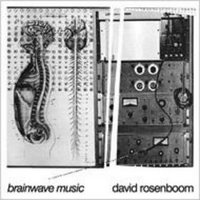
David Rosenboom
Brainwave Music (compilation released on A.R.C. 1976, reissued on EM)
“Rosenboom was a 70s New Music guy who performed with La Monte Young and helped organize the first important show of sound sculpture in North American (documented on another release on A.R.C., THE SOUNDS OF SOUND SCULPTURE). This first rate LP was beautifully reissued on CD by the highly intriguing EM label in Japan last year. The sidelong “Portable Gold and Philosopher’s Stones (Music from Brains in Fours)” uses brain waves to trigger synths. A spiralling, oozing piece, it’s the best analog synth Minimalism I’ve heard this side of David Borden, Horacio Vaggione’s “Ending”, or Keith Fullerton Whitman’s recent release on Heavy Tapes. The other tracks, “Chilean Draught” and “Piano Etude (Alpha)” use rapid-fire, repetitive piano figures, like Fred Rzewski on speed or something, combined with an odd and effective text about environmental disaster in South America on the former and more brain waves on the latter.”
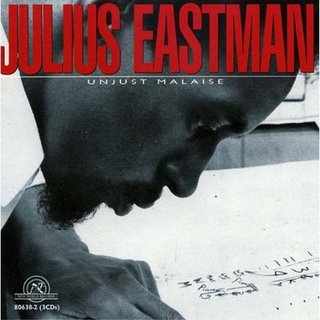
Julius Eastman
Gay Guerrilla (1980, available on the compilation ‘Unjust Malaise‘, New World Records 2005)
“In 2005 New World gallantly released a 3CD set of Julius Eastman’s music, UNJUST MALAISE, which contains a fine recording of his four-piano piece “Gay Guerrilla” (one of my favourite pieces of music ever, period). The set is superb but I’ve heard stuff that didn’t make it on which is even better than some of the released selections.” “The music of those who die young is often difficult to retrieve, but Eastman was a special case. Not only was he disorganized to begin with, his possessions had been scattered when he was evicted from his apartment. Many of his scores will likely never be recovered. He is rumored to have written a symphony: Does it exist? If so, can its notation be deciphered and implemented? Like so many composers on the Downtown scene, Eastman did not notate in neat,conventional ways. His style came partly from the tradition started by Terry Riley’s In C, in which isolated melodic fragments are to be repeated any number of times the performer wishes. The Downtown scene was a scene of composers performing their own music, and (as with the piano parts of Mozart’s concertos) there was no reason to notate every detail,since instructions could be communicated to the performer; also, the minimalist trend led to works whose exact notation would be cumbersome and contrary to the spirit of the music. Downtown music was something of a compromise between classical music and pop, with identifiable structures whose details were left to the performer or even to chance. (…) The multiple piano works are all made up of repeated notes or figures, with timings given to indicate when the pianists move to the next section (in the Minneapolis performance, I held up time cards to indicate the beginning of each new section). The organic form is less obvious than in Joan D’Arc because there is no regular aural cue as to the beginning of each section. Through most of Crazy Nigger, for instance, a new phrase begins every 90 seconds. The pieces modulates imply by the addition of new pitches and the eventual subtraction of old ones, creating dissonance and ambiguity whenever more pitches are present than fit in one key. The distinguishing feature of Gay Guerrilla is a propulsive “badadDUM, badaDUM” rhythm, heard in counterpoint with a slower motive of alternating whole- or half-steps. Eventually the music begins to move through harmonies at a quicker rate in that rhythm, and finally through the tonal fog appears Martin Luther’s hymn “A Mighty Fortress Is Our God” in octaves, cumulatively multiplying in counterpoint with itself and being quite subversively transformed, given the intention implied by Eastman’s title, as a gay manifesto. The piece dies away in canonic lines rising at different times in each piano.’ (from the liner notes by Kyle Gann)

Arthur Russell
Tower of Meaning – part 1 & 2 (Chatham Square LP 1983, reissued on the compilation ‘First Thought Best Thought’, Audika 2006)
“Before disco, and before the transcendent echoes, Arthur Russell wanted to be a composer. His journey began in 1972, leaving Iowa to study Indian classical composition with Ali Akbar Khan in Northern California and ending two years later in New York at the Manhattan School of Music. In that brief period Arthur met and worked with several musicians and poets that would guide his work throughout the remainder of the decade: Allen Ginsburg, Christian Wolff, Jackson MacLow, Rhys Chatham, Philip Glass, Elodie Lauten, and Ernie Brooks. First Thought Best Thought collects Arthur Russell’s out of print instrumental and orchestral compositions along with over 45 minutes of previously-unreleased material on two CDs. Initially intended to be performed in one 48 hour cycle, ‘Instrumentals’ was in fact only performed in excerpts a handful of times as a work in progress. The legendary performances captured live in New York at The Kitchen and Franklin St. Arts Center include the cream of that era’s downtown new music scene including Ernie Brooks, Rhys Chatham, Jon Gibson, Peter Gordon, Garrett List, Andy Paley, Dave Van Tiegham, and Peter Zummo. Included here is the previously unreleased ‘Instrumentals’ Vol. 1 along with ‘Instrumentals’ Vol. 2 that has been out of print for over twenty years. Originally released in 1984, sections of ‘Instrumentals’ Vol. 2 were incorrectly mastered at half speed, and have been now corrected for this compilation. ‘Reach One’ is one of Arthur’s earliest compositions dating back to 1973. The hypnotic soundscape was written and performed for two Fender Rhodes pianos, and is previously unreleased. One of the holy grails in Arthur’s discography, ‘Tower Of Meaning’ is a beautiful and stunningly moving orchestral work. Conducted by the late Julius Eastman, ‘Tower Of Meaning’ was originally released in a limited private edition of only 320 copies. ‘Sketch For The Face Of Helen’ shares only the same title as the previously released excerpt from 1981. Inspired by his work with friend and composer Arnold Dreyblatt, this previously unreleased version was recorded with an electronic tone generator, keyboard and ambient recordings of a rumbling tugboat from the Hudson River.” (Audika Records)
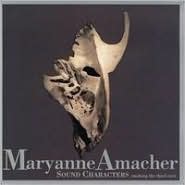
Maryanne Amacher
Sound Characters (Tzadik 1999)
“Tzadik released Maryanne Amacher’s SOUND CHARACTERS in 1999-a mere stereo CD can’t really do her sound art justice, but it’s reasonably representative”. “Marianne Amacher is one of electronic music’s truly legendary mavericks, whose music has been presented almost exclusively in huges spaces and installations for the past twenty years. This diverse collection of electronic soundscapes and “ear-dances” was chosen by the composer especially for Tzadik to work in the more intimate settings of compact disc. Spectacular acoustical effects take you to expansive worlds of dancing difference tones and psychedelic sonorities. A rare release by one of the most reclusive and elusive of today’s musical visionaries”. (Tzadik)
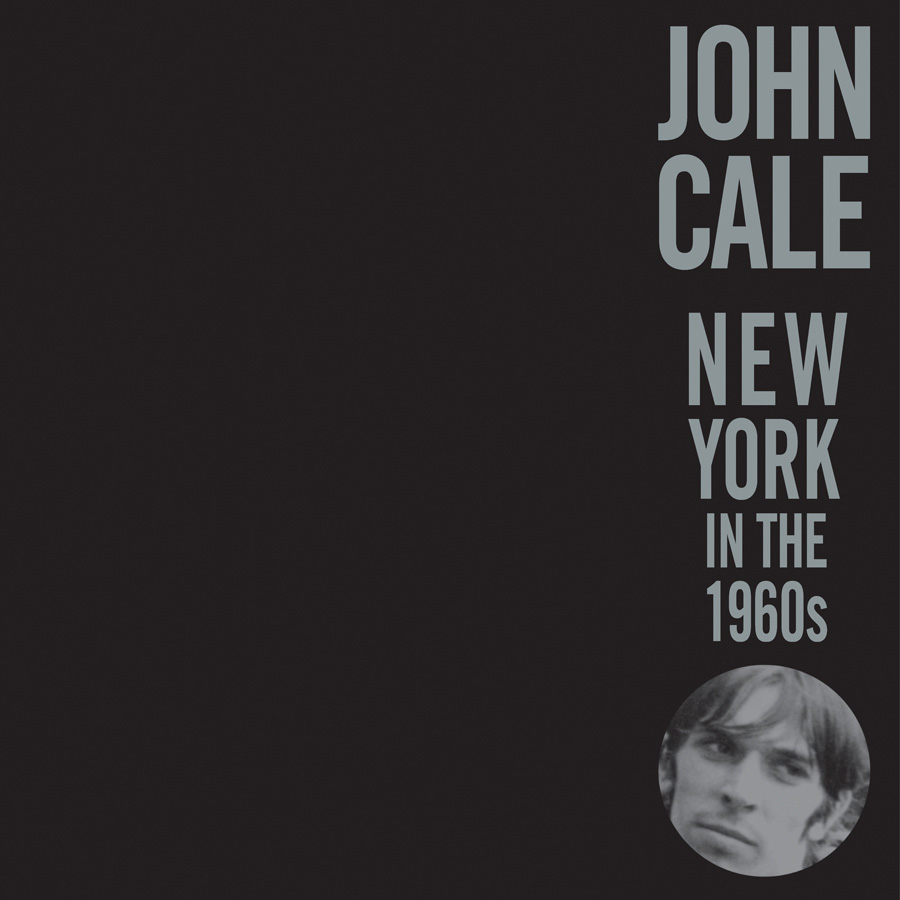
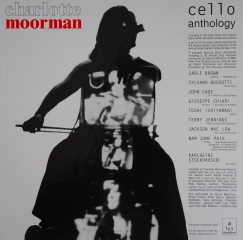
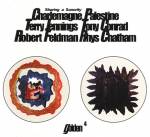
various Terry Jennings recordings
“Jennings appears on vol. 3 of John Cale’s NEW YORK IN THE 60s set on Table of the Elements, lending his sax to a piece called “Terry’s Cha Cha”. Cale (Jennings’ one-time roommate) plays a kind of cha cha blues on organ, and Angus MacLise does his best to hold his free spirit in check long enough to keep time on tambourine. Jennings’ fabled “Piece for Cello and Saxophone” appears on the new Charlotte Moorman CELLO ANTHOLOGY 4CD box set on Algha Marghen, a duo performance that Moorman and Jennings did in 1964 at Judson Hall. Lasting less than 4 minutes, it’s a quick dash through the piece, but then again I’m used to the La Monte Young/Charles Curtis version, which can last up to 90 minutes.”
In Charles Curtis‘ words:
“Jennings’ music manages to combine a bleakness, an austerity, with a kind of tendernes, that is indescribably poignant. The word bittersweet is rarely as accurately applied as it is to his music. It is a state that very few composers have ever captured; first and foremost, there is Schubert of the Winterreise; and then there are moments in Bach, in Purcell, in late Chopin, and occasionally in Debussy; and almost nothing else comes to mind. Perhaps the particular element that Jennings captures is one that is not familiar to the more forthright, dramatic, spectacular composers. Perhaps his reticence, his impossible personality, his personal problems, made him privy to a fleeting moment of beauty that is revealed in such detail to only a very few.”
Does anyone has recordings of Charles Curtis versions?
By the way: DO check out Charles’ performances of Morton Feldman’s 80-minute cello and piano work, Patterns in a Chromatic Field, with pianist Aleck Karis (on Tzadik), as well as pieces he did by Lamote Young (Just Charles & Cello in The Romantic Chord, Unofficial Release), Alvin Lucier (Alvin Lucier, out on Sigma Editions/Antiopic, in collaboration with clarinetist Anthony Burr), and Eliane Radigue (Naldjorlak – which I organised at Argos last year – has recently been published by Shiiin). Wonderful man, wonderful musician. See him at work live when you can. Interview here.
addendum: Also check out Sharing A Sonority, which recently came out on Alga Marghen. These previously unavailable recordings document some collaborations between Charlemagne Palestine, Terry Jenning, Bob Feldman, Tony Conrad and Rhys Chatham in he 1960 and ’70’s. It features a great duo for piano and sax performed by Charlemagne Palestine and Terry Jennings in 1974. “The two composers happened to play together in very private concerts at Cal Arts, but never recorded those sessions, until a special day when Charlemagne happened to have a little tape recorder around. The recording was considered lost for more than 30 years, when finally a copy was found thanks to Tony Conrad.” The disc also features a duo by Palestine and Feldman playing electronics and flute, recorded around 1967. The last track is the first 30 minutes of a recording by The Fundamental D Flat Group performing in Db. “During one trip back to NYC from Cal Arts, Charlemagne Palestine was invited by Tony Conrad (together with Rhys Chatham) to Albright College in New Jersey for a Sunday afternoon concert. That was the first and last time The Fundamental D Flat Group played in public (Tony Conrad: violin, horn, string drone; Rhys Chatham: flute, organ, string drone; Charlemagne Palestine: voice, pipes, snifter). Although the piece lasted all afternoon, the first 30 minutes were the only portion recorded during the performance”.